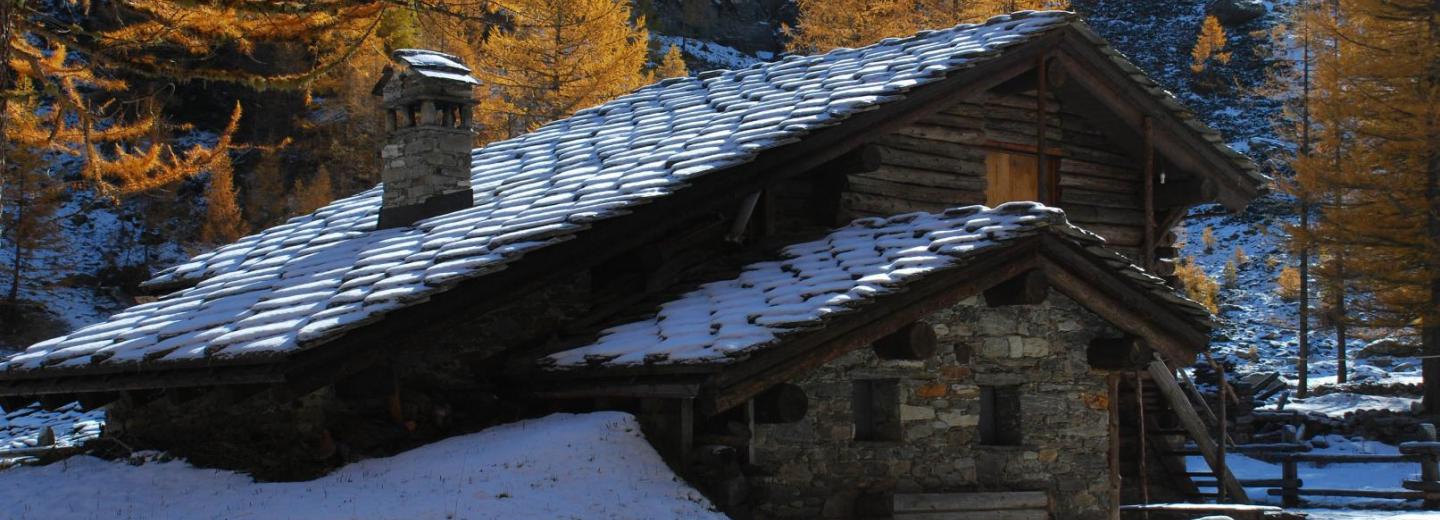In the past, the Park territory was densely populated. The Piedmont villages had entirely stone houses, while on the Aosta side, stone is joined to wood.
The alpine house reflects the character of a rural population, interested primarily in functionality: the most common model included a stone building with a stable on the ground floor, the residence on the first floor and even a barn above it. In these, even artistic and decorative elements survived such as votive pillars, typical of Val Soana, testifying to popular religiosity. Rock carvings and frescoes, Roman roads and bridges, military buildings, churches and medieval castles, alpine pastures, paths and mule tracks, stone walls erected to terrace the steep hillsides, irrigation ditches of stone and earth ... tell the long history of ancient populations who had their glory in the mid 800's, when King Victor Emmanuel II of Savoy frequented the Gran Paradiso to reach the ibex hunting locations. The royal hunting lodges, one-story buildings located on large plains above 2,000 feet, which were set aside for the king and his court, are jewels of the park worth visiting.
